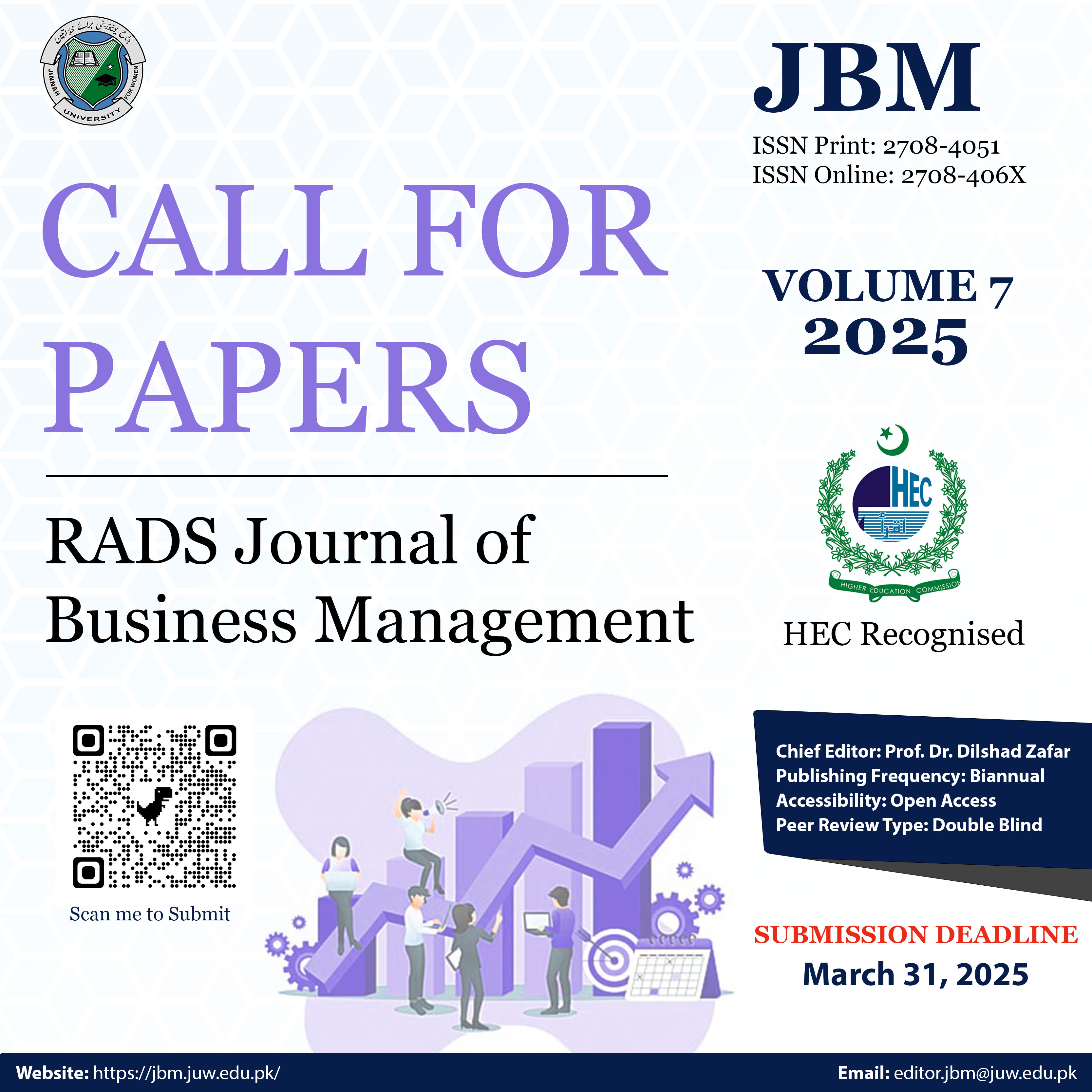The Monetarist Versus the Neo-Keynesian Views on Inflation: The Case of Pakistan
Abstract
Purpose: This research investigated and contrasted the Monetarist and the neo-Keynesian case for inflation behavior in Pakistan’s economy from 1971 to 2019.
Methodology: Applying three dynamic Ordinary Least Squares (OLS) models, with three indicator variables for inflation (GDP deflator, Consumer Price Index and Wholesale Price Index) used one by one as dependent variable, the analysis tests the fundamental arguments of the Monetarist and the neo-Keynesian positions concerning inflation, unemployment, and money supply.
Results: The findings dominantly support the Monetarist position, indicating a significant positive relationship between money supply growth and inflationary trends, while the impact of unemployment on inflation remains minimal. However, the neo-Keynesian view also holds validity in specific contexts where unemployment negatively influences inflation. This duality underscores the complexity of Pakistan’s inflation dynamics, and the contributions and relevance of both schools of thought in the country’s economy.
Originality: The utilization and testing of multiple inflation indicators against three dynamic models comprehensively captures different aspects of Pakistan’s economy, thereby contributing a more nuanced understanding of the subject matter to the literature.
Copyright (c) 2024 Muhammad Ashhar, Tahir Farooq, Muhammad Zohaib Sohail, Farrukh Mahmood

This work is licensed under a Creative Commons Attribution 4.0 International License.
The author retains the copyright and grants the right of first publication to the journal.





